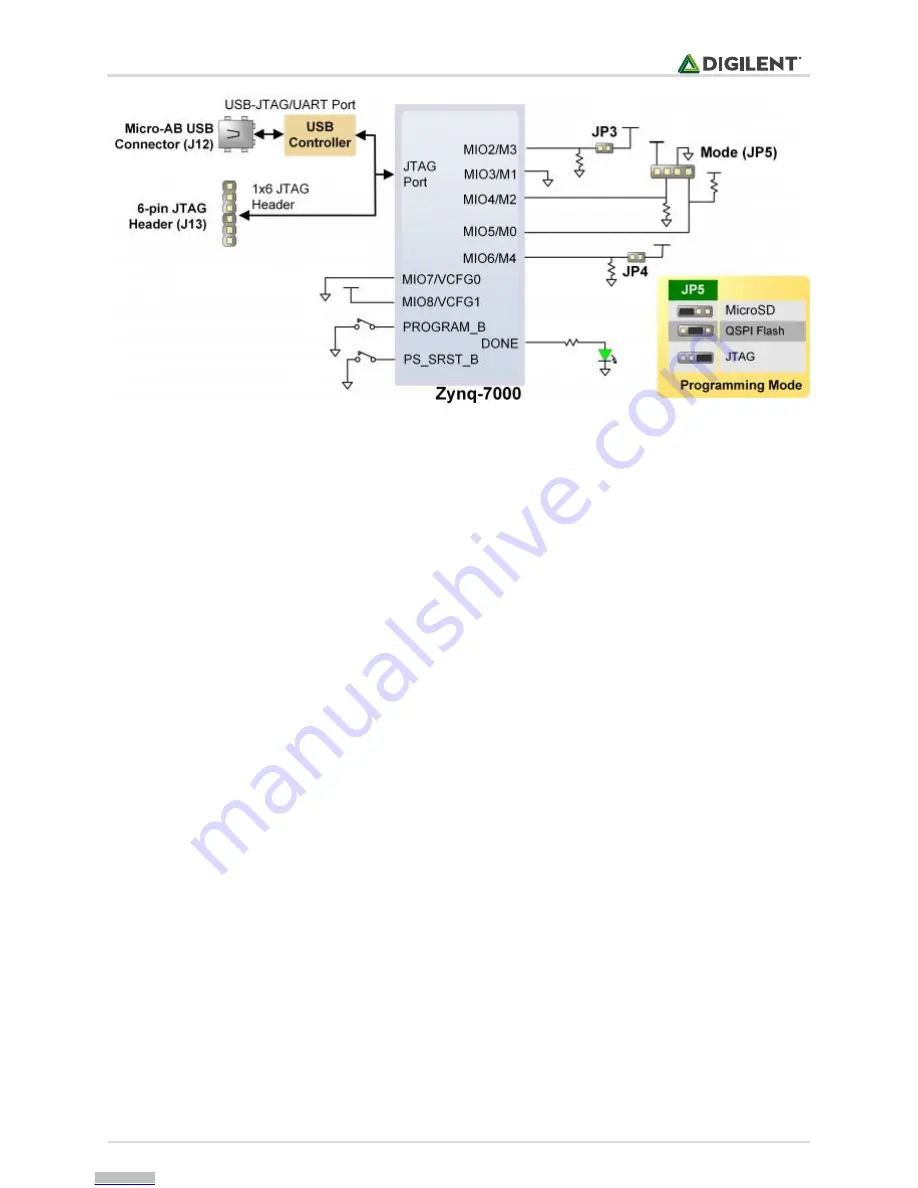
Zybo Z7 Board Reference Manual
Copyright Digilent, Inc. All rights reserved.
Other product and company names mentioned may be trademarks of their respective owners.
Page
13
of
31
Figure 2.1. Zybo Z7 configuration pins.
The three boot modes are described in the following sections.
2.1 microSD Boot Mode
The Zybo Z7 supports booting from a microSD card inserted into connector J4. The following procedure will allow
you to boot the Zynq from microSD with a standard Zynq Boot Image created with the Xilinx tools:
1.
Format the microSD card with a FAT32 file system.
2.
Copy the Zynq Boot Image created with Xilinx SDK to the microSD card.
3.
Rename the Zynq Boot Image on the microSD card to BOOT.bin.
4.
Eject the microSD card from your computer and insert it into connector J4 on the Zybo Z7.
5.
Attach a power source to the Zybo Z7 and select it using JP6.
6.
Place a single jumper on JP5, shorting the two leftmost pins (labeled “SD”).
7.
Turn the board on. The board will now boot the image on the microSD card.
2.2 Quad SPI Boot Mode
The Zybo Z7 has an onboard 16MB Quad-SPI Flash that the Zynq can boot from. Documentation available from
Xilinx describes how to use Xilinx SDK to program a Zynq Boot Image into a Flash device attached to the Zynq. Once
the Quad SPI Flash has been loaded with a Zynq Boot Image, the following steps can be followed to boot from it:
1.
Attach a power source to the Zybo Z7 and select it using JP6.
2.
Place a single jumper on JP5, shorting the two center pins (labeled “QSPI”).
3.
Turn the board on. The board will now boot the image stored in the Quad SPI flash.
2.3 JTAG Boot Mode
When placed in JTAG boot mode, the processor will wait until software is loaded by a host computer using the
Xilinx tools. After software has been loaded, it is possible to either let the software begin executing, or step
through it line by line using Xilinx SDK.
It is also possible to directly configure the PL over JTAG, independent of the processor. This can be done using the
Vivado Hardware Server.
Downloaded from
Downloaded from
Downloaded from
Downloaded from
Downloaded from
Downloaded from
Downloaded from
Downloaded from
Downloaded from
Downloaded from
Downloaded from
Downloaded from
Downloaded from




























